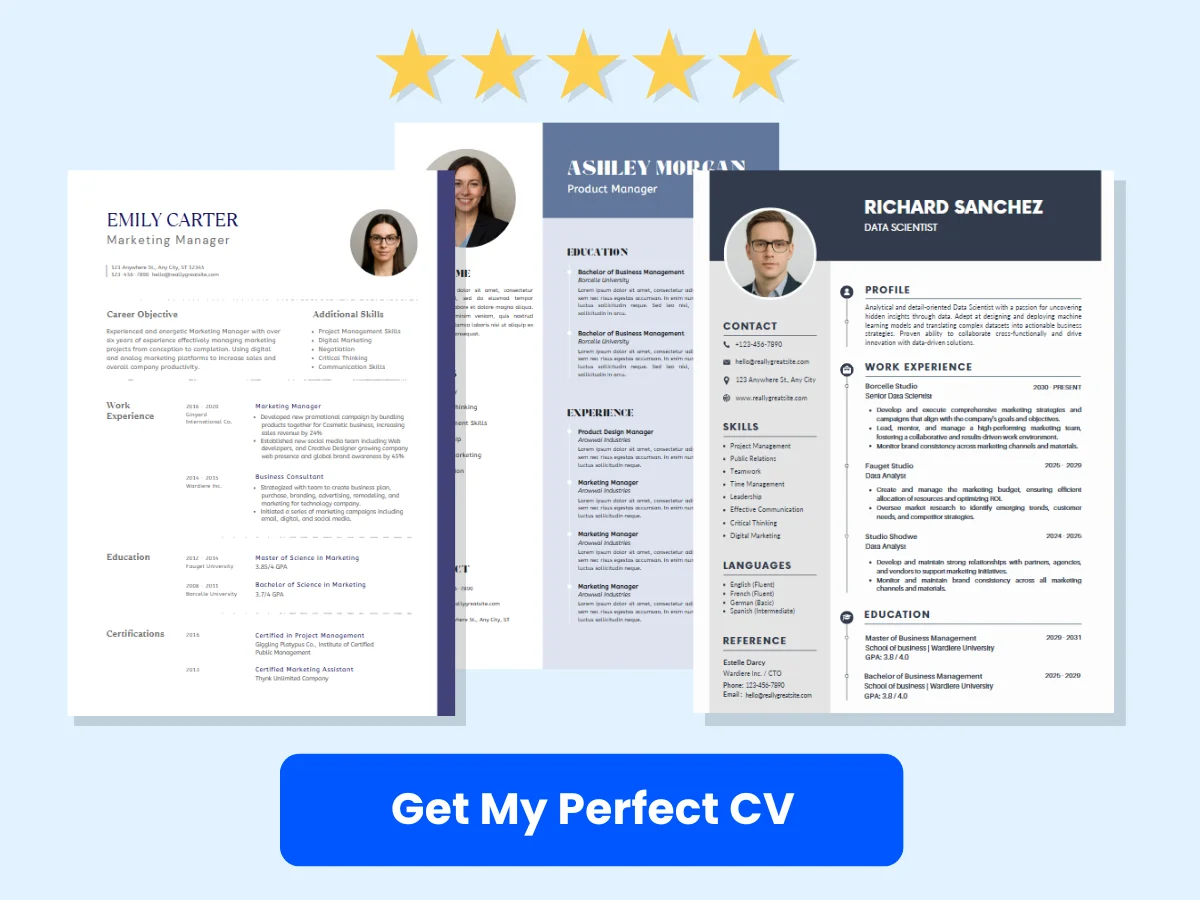In a world where communication is key, the ability to ask the right questions can transform conversations, foster deeper connections, and unlock valuable insights. Open-ended questions, in particular, serve as powerful tools that encourage expansive thinking and invite more thoughtful responses. Unlike their closed counterparts, which often yield simple ‘yes’ or ‘no’ answers, open-ended questions stimulate dialogue, promote creativity, and enhance understanding.
Understanding how and when to effectively employ open-ended questions is essential for anyone looking to improve their interpersonal skills, whether in personal relationships, professional settings, or educational environments. This article will guide you through the nuances of crafting open-ended questions, exploring their significance in various contexts, and providing practical tips for implementation. By the end, you will be equipped with the knowledge to engage others more meaningfully, fostering richer conversations that lead to greater clarity and collaboration.
Exploring Open-Ended Questions
Definition and Characteristics
Open-ended questions are inquiries that cannot be answered with a simple “yes” or “no.” Instead, they require the respondent to provide a more elaborate response, often encouraging them to share their thoughts, feelings, and experiences in greater detail. These questions are designed to promote discussion and elicit deeper insights, making them a valuable tool in various contexts, including education, counseling, interviews, and everyday conversations.
Characteristics of open-ended questions include:
- Encouragement of elaboration: They invite the respondent to expand on their thoughts, providing richer information.
- Flexibility: The answers can vary widely, allowing for a range of responses that can lead to unexpected insights.
- Subjectivity: They often reflect personal opinions, feelings, and experiences, making them more subjective than closed-ended questions.
- Engagement: Open-ended questions tend to engage the respondent more actively, fostering a sense of involvement in the conversation.
Open-Ended vs. Closed-Ended Questions
Understanding the difference between open-ended and closed-ended questions is crucial for effective communication. Closed-ended questions are those that can be answered with a single word or a short phrase, typically “yes” or “no.” For example, “Did you enjoy the movie?” is a closed-ended question. While these questions can be useful for gathering specific information or data, they often limit the depth of the conversation.


In contrast, open-ended questions encourage a more expansive dialogue. For instance, instead of asking, “Did you enjoy the movie?” one might ask, “What did you think about the movie?” This shift not only invites a more detailed response but also opens the door for further discussion about the respondent’s thoughts, feelings, and interpretations.
Here are some key differences between open-ended and closed-ended questions:
| Aspect | Open-Ended Questions | Closed-Ended Questions |
|---|---|---|
| Response Type | Detailed, elaborative | Short, specific |
| Purpose | Encourage discussion and exploration | Gather specific information |
| Engagement Level | High | Low |
| Examples | “What are your thoughts on climate change?” | “Is climate change real?” |
Examples of Open-Ended Questions
To effectively utilize open-ended questions, it’s essential to understand how to frame them in various contexts. Here are some examples categorized by different scenarios:
In Education
Teachers can use open-ended questions to stimulate critical thinking and encourage student participation. Examples include:
- “How do you think the themes in this novel relate to our current society?”
- “What strategies did you use to solve this math problem?”
- “Can you describe a time when you faced a challenge and how you overcame it?”
In Counseling
Counselors often employ open-ended questions to help clients explore their feelings and experiences. Examples include:
- “What emotions are you experiencing right now?”
- “Can you tell me more about your relationship with your family?”
- “What are your goals for the future, and what steps do you think you need to take to achieve them?”
In Interviews
Interviewers can gain deeper insights into candidates by asking open-ended questions. Examples include:


- “What motivated you to apply for this position?”
- “Can you describe a project you worked on that you are particularly proud of?”
- “How do you handle conflict in a team setting?”
In Everyday Conversations
Open-ended questions can enhance personal relationships and foster meaningful conversations. Examples include:
- “What was the highlight of your day?”
- “How do you feel about the changes happening in our community?”
- “What are your thoughts on the latest trends in technology?”
When to Use Open-Ended Questions
Knowing when to ask open-ended questions is just as important as knowing how to ask them. Here are some scenarios where open-ended questions can be particularly effective:
During Brainstorming Sessions
When generating ideas, open-ended questions can help participants think creatively and share diverse perspectives. For example, asking, “What are some innovative solutions we can implement to improve our product?” encourages team members to think outside the box.
In Conflict Resolution
When addressing conflicts, open-ended questions can facilitate understanding and empathy. Asking, “What are your concerns regarding this issue?” allows each party to express their feelings and viewpoints, paving the way for resolution.
In Feedback Sessions
When providing or receiving feedback, open-ended questions can lead to constructive discussions. For instance, asking, “What do you think worked well in this project, and what could be improved?” encourages a balanced evaluation of performance.


In Relationship Building
In personal relationships, open-ended questions can deepen connections. Asking, “What are your dreams and aspirations?” invites your partner to share their innermost thoughts, fostering intimacy and understanding.
Tips for Crafting Effective Open-Ended Questions
To maximize the effectiveness of open-ended questions, consider the following tips:
- Be clear and specific: Ensure your question is straightforward and easy to understand. Avoid vague language that may confuse the respondent.
- Avoid leading questions: Frame your questions neutrally to avoid influencing the respondent’s answer. For example, instead of asking, “Don’t you think this solution is the best?” ask, “What are your thoughts on this solution?”
- Follow up: Be prepared to ask follow-up questions based on the respondent’s answers. This shows that you are engaged and interested in their perspective.
- Practice active listening: Pay close attention to the respondent’s answers, and respond thoughtfully. This encourages a more meaningful dialogue.
By understanding the nuances of open-ended questions and employing them effectively, you can enhance communication, foster deeper connections, and gain valuable insights in various aspects of life.
The Benefits of Asking Open-Ended Questions
Open-ended questions are a powerful tool in communication, allowing for a depth of understanding that closed questions often fail to achieve. Unlike closed questions, which typically elicit a simple “yes” or “no” response, open-ended questions invite elaboration and exploration. This section delves into the numerous benefits of asking open-ended questions, including encouraging detailed responses, fostering critical thinking, building better relationships, and enhancing communication skills.
Encouraging Detailed Responses
One of the most significant advantages of open-ended questions is their ability to elicit detailed responses. When you ask a question that cannot be answered with a simple “yes” or “no,” you encourage the respondent to share their thoughts, feelings, and experiences in greater depth. This not only provides you with more information but also allows for a richer understanding of the topic at hand.
For example, consider the difference between the closed question, “Did you enjoy the event?” and the open-ended question, “What did you enjoy most about the event?” The first question may yield a straightforward answer, but the second invites the respondent to reflect and articulate their experience, leading to insights that can inform future events or discussions.


In professional settings, open-ended questions can be particularly useful during interviews or performance reviews. Instead of asking, “Did you meet your goals this quarter?” a manager might ask, “What challenges did you face in meeting your goals this quarter?” This approach not only encourages employees to share their experiences but also opens the door for constructive feedback and dialogue.
Fostering Critical Thinking
Open-ended questions are instrumental in promoting critical thinking. By requiring respondents to think beyond simple answers, these questions challenge individuals to analyze, synthesize, and evaluate information. This process of reflection can lead to deeper insights and a more nuanced understanding of complex issues.
In educational settings, teachers can use open-ended questions to stimulate discussion and encourage students to think critically about the material. For instance, instead of asking, “Is climate change real?” a teacher might pose the question, “How do you think climate change is affecting our planet?” This not only prompts students to consider various aspects of climate change but also encourages them to engage with the topic on a deeper level.
Moreover, in problem-solving scenarios, open-ended questions can help teams explore different perspectives and solutions. For example, during a brainstorming session, instead of asking, “Should we implement this strategy?” a facilitator might ask, “What are the potential benefits and drawbacks of implementing this strategy?” This encourages team members to think critically about the implications of their decisions, leading to more informed and effective outcomes.
Building Better Relationships
Asking open-ended questions can significantly enhance interpersonal relationships, whether in personal or professional contexts. These questions demonstrate genuine interest in the other person’s thoughts and feelings, fostering a sense of connection and trust.
In personal relationships, open-ended questions can lead to more meaningful conversations. For instance, instead of asking a partner, “Did you have a good day?” one might ask, “What was the best part of your day?” This not only encourages the partner to share more but also shows that you value their experiences and emotions. Such interactions can strengthen bonds and promote a deeper understanding of one another.


In the workplace, open-ended questions can help build rapport among colleagues. For example, during team meetings, a leader might ask, “What are your thoughts on our current project?” This approach invites team members to share their perspectives, fostering an inclusive environment where everyone feels valued and heard. As a result, team cohesion and collaboration can improve, leading to better overall performance.
Enhancing Communication Skills
Mastering the art of asking open-ended questions can significantly enhance one’s communication skills. By practicing this technique, individuals can become more effective communicators, capable of engaging others in meaningful dialogue.
One key aspect of effective communication is active listening. When you ask open-ended questions, you must also be prepared to listen attentively to the responses. This practice not only helps you gather valuable information but also demonstrates respect for the speaker’s thoughts and feelings. As you become more adept at listening, you will find that your ability to engage in conversations improves, leading to more productive interactions.
Additionally, open-ended questions can help you navigate difficult conversations. For instance, if a colleague is upset about a project, instead of asking, “Are you upset?” you might ask, “Can you share what’s been bothering you about the project?” This approach allows the individual to express their feelings and concerns, creating an opportunity for resolution and understanding.


Furthermore, open-ended questions can be a powerful tool in conflict resolution. By encouraging all parties to share their perspectives, you can facilitate a more constructive dialogue that focuses on finding common ground. For example, during a disagreement, asking, “What do you think we can do to resolve this issue?” invites collaboration and problem-solving rather than defensiveness.
Practical Tips for Asking Open-Ended Questions
To effectively incorporate open-ended questions into your communication, consider the following tips:
- Be Curious: Approach conversations with a genuine desire to learn from others. This mindset will naturally lead you to ask open-ended questions.
- Use “What” and “How”: Start your questions with “what” or “how” to encourage elaboration. For example, “What inspired you to pursue this career?” or “How did you approach that challenge?”
- Avoid Leading Questions: Ensure your questions are neutral and do not imply a desired answer. For instance, instead of asking, “Why do you think this is a bad idea?” ask, “What are your thoughts on this idea?”
- Practice Active Listening: Pay close attention to the responses you receive. This will not only help you ask follow-up questions but also show the speaker that you value their input.
- Be Patient: Give the respondent time to think and articulate their thoughts. Silence can be uncomfortable, but it often leads to deeper insights.
By understanding the benefits of open-ended questions and practicing their use, you can enhance your communication skills, foster critical thinking, and build stronger relationships in both personal and professional contexts.
When to Use Open-Ended Questions
Open-ended questions are powerful tools that can elicit deeper insights, foster meaningful conversations, and encourage critical thinking. Understanding when to use these questions can significantly enhance communication in various contexts, from personal conversations to professional settings, educational environments, and therapeutic contexts. Below, we explore the specific scenarios where open-ended questions shine.
In Personal Conversations
In personal conversations, open-ended questions can help strengthen relationships and deepen understanding between individuals. These questions invite the other person to share their thoughts, feelings, and experiences in a more expansive way than closed questions, which typically yield short, one-word answers.


For example, instead of asking, “Did you enjoy the movie?” you might ask, “What did you think about the movie?” This encourages the other person to elaborate on their feelings and opinions, leading to a richer dialogue. Open-ended questions can also help in resolving conflicts or misunderstandings by allowing each party to express their perspective fully.
Additionally, using open-ended questions in personal conversations can demonstrate genuine interest and empathy. Questions like “How have you been feeling about your job lately?” or “What are your thoughts on our recent vacation?” can open the door to deeper discussions, allowing for emotional connection and support.
In Professional Settings
Open-ended questions are equally valuable in professional settings, where they can facilitate collaboration, innovation, and understanding among team members. Here are some specific scenarios where open-ended questions can be particularly effective:
During Interviews
In job interviews, open-ended questions allow candidates to showcase their skills, experiences, and personality. Instead of asking, “Do you have experience with project management?” an interviewer might ask, “Can you describe a project you managed and the challenges you faced?” This type of question encourages candidates to provide detailed responses, giving interviewers a better sense of their capabilities and thought processes.
Moreover, open-ended questions can help interviewers assess cultural fit and interpersonal skills. Questions like “What motivates you in your work?” or “How do you handle conflict within a team?” can reveal a candidate’s values and approach to collaboration.
In Meetings
During team meetings, open-ended questions can stimulate discussion and encourage participation from all members. Instead of asking, “Is everyone okay with this plan?” which may lead to passive agreement, a facilitator might ask, “What are your thoughts on this plan, and how do you think it could be improved?” This invites team members to share their insights and suggestions, fostering a collaborative environment.
Additionally, open-ended questions can help identify potential issues or areas for improvement. For instance, asking, “What challenges do you foresee in implementing this strategy?” can lead to proactive problem-solving and innovation.
For Customer Feedback
In customer feedback scenarios, open-ended questions can provide valuable insights into customer experiences and preferences. Instead of asking, “Did you like our product?” a business might ask, “What did you like or dislike about our product?” This encourages customers to share detailed feedback, which can be instrumental in improving products and services.
Furthermore, open-ended questions can help businesses understand customer needs and expectations. Questions like “How can we enhance your experience with our service?” can lead to actionable insights that drive customer satisfaction and loyalty.
In Educational Environments
Open-ended questions play a crucial role in educational settings, promoting critical thinking and active engagement among students. Here’s how they can be effectively utilized:
Classroom Discussions
In classroom discussions, open-ended questions can stimulate dialogue and encourage students to think critically about the subject matter. Instead of asking, “What is the capital of France?” a teacher might ask, “Why do you think Paris is considered a cultural hub?” This type of question encourages students to explore their thoughts and engage with the material on a deeper level.
Moreover, open-ended questions can foster a sense of community in the classroom. Questions like “What are your thoughts on the themes presented in this book?” allow students to share their perspectives and learn from one another, creating a collaborative learning environment.
Student Assessments
In assessments, open-ended questions can provide a more comprehensive understanding of a student’s knowledge and skills. Instead of relying solely on multiple-choice questions, educators can include prompts like “Explain the significance of the scientific method in research.” This allows students to demonstrate their understanding in a nuanced way, showcasing their ability to articulate complex ideas.
Additionally, open-ended assessments can encourage creativity and critical thinking. For instance, asking students to “Propose a solution to a current environmental issue” not only assesses their knowledge but also their ability to think critically and innovatively.
In Counseling and Therapy
In counseling and therapy, open-ended questions are essential for facilitating exploration and self-discovery. They allow clients to express their thoughts and feelings in a safe and supportive environment. For example, instead of asking, “Are you feeling sad?” a therapist might ask, “Can you tell me more about what you’re feeling right now?” This encourages clients to delve deeper into their emotions and experiences.
Open-ended questions can also help clients identify patterns in their thoughts and behaviors. Questions like “What do you think triggers your anxiety?” can lead to insights that are crucial for personal growth and healing.
Furthermore, open-ended questions can empower clients by giving them the space to explore their own solutions. For instance, asking, “What steps do you think you could take to improve your situation?” encourages clients to take an active role in their healing process, fostering a sense of agency and responsibility.
Open-ended questions are versatile tools that can enhance communication across various contexts. By understanding when and how to use them effectively, individuals can foster deeper connections, encourage critical thinking, and facilitate meaningful dialogue in personal, professional, educational, and therapeutic settings.
How to Formulate Effective Open-Ended Questions
Open-ended questions are powerful tools in communication, allowing for deeper insights and more meaningful conversations. However, crafting these questions effectively requires a thoughtful approach. We will explore various techniques for formulating open-ended questions, common pitfalls to avoid, and examples of well-structured inquiries.
Techniques for Crafting Questions
Using “What,” “How,” and “Why”
One of the most effective ways to create open-ended questions is to start with the words “What,” “How,” or “Why.” These words encourage expansive thinking and invite the respondent to share their thoughts and feelings in detail.
- What: Questions beginning with “What” prompt the respondent to provide information, opinions, or descriptions. For example, “What are your thoughts on the new policy changes?” This question encourages the respondent to elaborate on their perspective.
- How: “How” questions often seek to understand processes or experiences. For instance, “How did you approach the project?” This invites the respondent to share their methodology and thought process, leading to a richer conversation.
- Why: Questions that start with “Why” can delve into motivations and reasoning. For example, “Why do you believe this approach is effective?” This encourages the respondent to reflect on their beliefs and provide deeper insights.
Avoiding Leading Questions
Leading questions can skew the responses and limit the depth of the conversation. These questions suggest a particular answer or imply that there is a “right” response. For example, asking “Don’t you think this solution is the best?” leads the respondent toward a specific answer rather than allowing them to express their true thoughts.
To avoid leading questions, focus on neutrality. Instead of framing a question to elicit a specific response, aim for open phrasing. For instance, instead of asking, “Isn’t this product the best on the market?” you could ask, “What are your thoughts on this product compared to others?” This approach encourages a more honest and comprehensive response.
Ensuring Clarity and Relevance
Clarity is crucial when formulating open-ended questions. Ambiguous or overly complex questions can confuse respondents and lead to vague answers. To ensure clarity:
- Use simple language: Avoid jargon or technical terms that may not be understood by all respondents.
- Be specific: Instead of asking, “What do you think about our services?” consider asking, “What aspects of our customer service do you find most valuable?” This specificity helps guide the respondent’s thoughts.
- Stay relevant: Ensure that your questions are pertinent to the topic at hand. Irrelevant questions can derail the conversation and lead to frustration.
By focusing on clarity and relevance, you can create questions that facilitate meaningful dialogue and encourage respondents to share their insights freely.
Common Pitfalls to Avoid
While crafting open-ended questions, it’s essential to be aware of common pitfalls that can hinder effective communication. Here are some key pitfalls to avoid:
- Overly Broad Questions: Questions that are too broad can overwhelm respondents and lead to vague answers. For example, asking “What do you think about life?” is too expansive. Instead, narrow it down to something like, “What experiences have shaped your views on work-life balance?”
- Compound Questions: Avoid asking multiple questions at once, as this can confuse the respondent. For instance, instead of asking, “What do you think about our new product, and how does it compare to the old one?” break it into two separate questions: “What are your thoughts on our new product?” followed by “How does it compare to the old one?”
- Assuming Knowledge: Be cautious not to assume that the respondent has prior knowledge about a topic. Questions like “What do you think about the recent changes in the tax law?” may leave some respondents feeling lost. Instead, provide context: “What are your thoughts on the recent changes in the tax law regarding small businesses?”
- Neglecting Follow-Up Questions: Open-ended questions often lead to further inquiries. Failing to ask follow-up questions can limit the depth of the conversation. For example, if a respondent shares their thoughts on a topic, a follow-up like, “Can you elaborate on that?” can encourage them to provide more detail.
Examples of Well-Formulated Questions
To illustrate the principles of effective open-ended questions, here are some examples that embody the techniques discussed:
- What: “What challenges have you faced in your current role, and how have you addressed them?” This question invites the respondent to share specific experiences and solutions.
- How: “How do you envision the future of remote work impacting team dynamics?” This encourages the respondent to think critically about a relevant topic and share their insights.
- Why: “Why do you think community engagement is essential for local businesses?” This question prompts the respondent to reflect on their beliefs and provide a thoughtful response.
- Specificity: “What features do you find most beneficial in our app, and why?” This question is clear and encourages the respondent to provide detailed feedback.
- Follow-Up: After a respondent shares their thoughts, a follow-up question like, “Can you give an example of a time when that feature helped you?” can deepen the conversation.
By employing these techniques and avoiding common pitfalls, you can formulate open-ended questions that foster engaging and insightful discussions. Remember, the goal is to create an environment where respondents feel comfortable sharing their thoughts and experiences, leading to richer conversations and deeper understanding.
Strategies for Implementing Open-Ended Questions
Active Listening Techniques
Active listening is a crucial skill when it comes to asking open-ended questions. It involves fully concentrating, understanding, responding, and remembering what the other person is saying. This technique not only helps in gathering information but also fosters a deeper connection between the speaker and the listener. Here are some effective active listening techniques:
- Maintain Eye Contact: Keeping eye contact shows that you are engaged and interested in the conversation. It encourages the speaker to share more openly.
- Use Non-Verbal Cues: Nodding, leaning slightly forward, and using facial expressions can signal to the speaker that you are attentive and encourage them to continue.
- Paraphrase and Summarize: Reflecting back what the speaker has said in your own words can clarify understanding and demonstrate that you are listening. For example, you might say, “So what I hear you saying is…”
- Avoid Interrupting: Allow the speaker to finish their thoughts without interjecting. This shows respect for their perspective and encourages them to elaborate.
- Ask Clarifying Questions: If something is unclear, ask questions that prompt the speaker to elaborate. For instance, “Can you tell me more about that?”
By employing these active listening techniques, you create a supportive atmosphere that encourages the speaker to share their thoughts and feelings more freely, making your open-ended questions more effective.
Creating a Comfortable Environment
The environment in which you ask open-ended questions can significantly impact the quality of the responses you receive. A comfortable setting can help the speaker feel safe and valued, which in turn encourages them to open up. Here are some strategies to create a conducive environment:
- Choose the Right Location: Select a quiet, private space where interruptions are minimal. This could be a cozy corner in a café, a quiet office, or even a park bench. The key is to ensure that the setting is free from distractions.
- Be Mindful of Body Language: Your body language should convey openness and approachability. Avoid crossing your arms or appearing distracted. Instead, adopt a relaxed posture and use gestures that invite conversation.
- Establish Rapport: Start the conversation with light, friendly topics to build rapport. This can help ease any tension and make the speaker feel more comfortable sharing their thoughts.
- Be Respectful of Time: Ensure that both you and the speaker have enough time to engage in a meaningful conversation. Rushing through questions can create pressure and inhibit open dialogue.
- Show Empathy: Acknowledge the speaker’s feelings and perspectives. Phrases like “I understand how you feel” or “That sounds challenging” can validate their experiences and encourage them to share more.
By creating a comfortable environment, you set the stage for more honest and insightful responses to your open-ended questions.
Encouraging Participation
Encouraging participation is essential when asking open-ended questions, especially in group settings or discussions. Here are some strategies to foster engagement:
- Invite Everyone to Share: In group discussions, make a point to invite quieter members to share their thoughts. You might say, “I’d love to hear your perspective on this, [Name].” This can help ensure that all voices are heard.
- Use Inclusive Language: Frame your questions in a way that makes everyone feel included. For example, instead of asking, “What do you think about this issue?” you could ask, “How do we all feel about this issue?”
- Encourage Building on Ideas: Prompt participants to build on each other’s ideas. You can say, “That’s an interesting point, [Name]. Does anyone have a different perspective or something to add?” This encourages a collaborative discussion.
- Be Patient: Give participants time to think before responding. Silence can be uncomfortable, but it often leads to deeper reflection and more thoughtful answers.
- Provide Positive Reinforcement: Acknowledge contributions with positive feedback. Phrases like “That’s a great insight!” or “I appreciate your honesty” can motivate others to participate more actively.
By encouraging participation, you create a dynamic dialogue that enriches the conversation and leads to more comprehensive insights.
Following Up with Probing Questions
Probing questions are follow-up inquiries that encourage the speaker to elaborate on their initial responses. They are essential for digging deeper into a topic and uncovering more nuanced insights. Here are some effective strategies for using probing questions:
- Ask for Examples: When a speaker shares a general idea, ask for specific examples to clarify their point. For instance, “Can you give me an example of that situation?” This helps to ground abstract concepts in real-life experiences.
- Encourage Elaboration: If a speaker mentions a thought-provoking idea, encourage them to expand on it. You might say, “That’s interesting! Can you tell me more about how you came to that conclusion?”
- Explore Feelings and Reactions: Probing questions can also focus on emotions. For example, “How did that experience make you feel?” This can lead to a deeper understanding of the speaker’s perspective.
- Challenge Assumptions: If a speaker presents a viewpoint that seems one-dimensional, gently challenge them to think critically. You could ask, “What do you think might be the counterargument to that?” This encourages critical thinking and a more balanced discussion.
- Connect Ideas: Help the speaker make connections between their thoughts and broader themes. For instance, “How does this relate to what we discussed earlier about [topic]?” This can lead to richer conversations and insights.
By following up with probing questions, you not only demonstrate your interest in the speaker’s thoughts but also facilitate a deeper exploration of the topic at hand.
Incorporating these strategies into your approach to open-ended questions can significantly enhance the quality of your conversations, whether in personal interactions, professional settings, or group discussions. By actively listening, creating a comfortable environment, encouraging participation, and following up with probing questions, you can foster meaningful dialogue that leads to greater understanding and insight.
Analyzing Responses to Open-Ended Questions
Open-ended questions are powerful tools for gathering insights, opinions, and feelings. However, the true value of these questions lies not just in the responses themselves, but in how we analyze and interpret them. This section will delve into the process of analyzing responses to open-ended questions, focusing on identifying key themes and patterns, using responses to inform decisions, and providing constructive feedback.
Identifying Key Themes and Patterns
Once you have collected responses to your open-ended questions, the next step is to analyze them for key themes and patterns. This process involves several stages:
1. Data Organization
Before diving into analysis, it’s essential to organize the data. This can be done by transcribing responses if they are recorded, or by compiling them into a spreadsheet or document. Ensure that each response is clearly labeled with relevant identifiers, such as respondent demographics or context of the question.
2. Initial Reading
Start with a thorough reading of all responses. This initial pass allows you to get a sense of the overall sentiment and the range of opinions expressed. Take notes on any immediate thoughts or standout responses that catch your attention.
3. Coding Responses
Coding is a systematic way to categorize responses. Create a set of codes that represent different themes or ideas that emerge from the responses. For example, if you asked about customer satisfaction, codes might include “product quality,” “customer service,” and “value for money.” As you read through the responses, assign these codes to relevant sections of text. This can be done manually or with qualitative data analysis software.
4. Identifying Themes
After coding, look for patterns among the codes. Are there certain themes that appear frequently? Are there contrasting opinions that warrant further exploration? Group similar codes together to form broader themes. For instance, if multiple respondents mention “long wait times” and “unhelpful staff,” you might create a theme around “service efficiency.”
5. Quantifying Themes
While open-ended responses are qualitative, quantifying the frequency of themes can provide valuable insights. Count how many times each theme appears across responses. This quantitative data can help prioritize issues or areas for improvement. For example, if “product quality” is mentioned in 70% of responses, it indicates a significant concern that may need addressing.
Using Responses to Inform Decisions
Analyzing open-ended responses is not just an academic exercise; it has practical implications for decision-making. Here’s how to leverage the insights gained from your analysis:
1. Identifying Areas for Improvement
Responses can highlight specific areas where your organization may be falling short. For instance, if many respondents express dissatisfaction with a particular product feature, this feedback can guide product development teams to prioritize enhancements. By addressing these concerns, you can improve customer satisfaction and loyalty.
2. Shaping Strategy
Open-ended responses can inform broader strategic decisions. For example, if feedback indicates a growing interest in sustainability, your organization might consider integrating eco-friendly practices into its operations. This not only aligns with customer values but can also differentiate your brand in a competitive market.
3. Enhancing Communication
Understanding the language and sentiments of your audience can improve how you communicate with them. If responses reveal that customers appreciate transparency, you might adjust your marketing messages to emphasize openness and honesty. Tailoring your communication strategy based on customer feedback can foster stronger relationships.
4. Supporting Training and Development
Responses can also inform training programs. If feedback indicates that customers feel staff are not knowledgeable, this can prompt a review of training materials and processes. By investing in employee development based on customer insights, you can enhance service quality and customer experience.
Providing Constructive Feedback
When analyzing open-ended responses, it’s crucial to consider how to provide constructive feedback to relevant stakeholders. Here are some strategies for delivering feedback effectively:
1. Be Specific
General feedback can be vague and unhelpful. Instead, provide specific examples from the responses to illustrate your points. For instance, rather than saying “customers are unhappy,” you might say, “Several customers mentioned that they found the checkout process confusing, which led to frustration.” This specificity helps stakeholders understand the context and importance of the feedback.
2. Focus on Actionable Insights
Feedback should not only highlight issues but also suggest potential solutions. For example, if a theme of “poor communication” emerges, you might recommend implementing regular updates to customers about their orders. Providing actionable insights empowers stakeholders to take steps toward improvement.
3. Balance Positive and Negative Feedback
While it’s important to address areas for improvement, don’t overlook positive feedback. Highlighting what is working well can motivate teams and reinforce successful practices. For instance, if customers praise a particular product feature, acknowledge this while also addressing areas that need attention.
4. Foster a Culture of Openness
Encourage a culture where feedback is welcomed and valued. When stakeholders understand that feedback is a tool for growth rather than criticism, they are more likely to engage with it constructively. This can lead to a more responsive and adaptive organization.
5. Follow Up
After providing feedback, it’s essential to follow up on the actions taken in response. This demonstrates that the feedback was taken seriously and encourages ongoing dialogue. For example, if changes are made based on customer feedback, communicate these changes back to the respondents to show that their voices matter.
Analyzing responses to open-ended questions is a multifaceted process that involves identifying themes, informing decisions, and providing constructive feedback. By mastering this process, organizations can harness the full potential of open-ended questions to drive meaningful change and enhance their understanding of customer needs.
Tools and Resources
Recommended Books and Articles
When it comes to mastering the art of asking open-ended questions, a wealth of literature exists to guide you. Here are some highly recommended books and articles that delve into the nuances of effective questioning:
-
“A More Beautiful Question: The Power of Inquiry to Spark Breakthrough Ideas” by Warren Berger
This book explores the importance of asking the right questions and how they can lead to innovation and problem-solving. Berger emphasizes the role of open-ended questions in fostering creativity and deeper understanding.
-
“The Art of Conversation: A Guided Tour of the Human Experience” by Catherine Blyth
Blyth’s work highlights the significance of conversation in our lives and how open-ended questions can enhance interpersonal communication. The book provides practical tips on how to engage others meaningfully.
-
“The Coaching Habit: Say Less, Ask More & Change the Way You Lead Forever” by Michael Bungay Stanier
This book is a must-read for anyone in a leadership or coaching role. It emphasizes the importance of asking open-ended questions to facilitate growth and development in others, providing a framework for effective coaching conversations.
-
“Questions Are the Answer” by Hal Gregersen
Gregersen argues that asking the right questions is crucial for unlocking creativity and innovation. This book provides insights into how open-ended questions can lead to transformative thinking and problem-solving.
-
“The Power of a Positive No: How to Say No and Still Get to Yes” by William Ury
While primarily focused on negotiation, Ury’s book discusses the role of questions in conflict resolution. Open-ended questions are highlighted as a tool for understanding different perspectives and finding common ground.
Online Courses and Workshops
For those who prefer structured learning, numerous online courses and workshops focus on communication skills, including the art of asking open-ended questions. Here are some notable options:
-
Coursera: “Effective Communication: Writing, Design, and Presentation”
This course, offered by the University of Colorado Boulder, covers various aspects of communication, including how to ask questions that elicit detailed responses. It provides practical exercises to enhance your questioning skills.
-
Udemy: “Mastering Communication: How to Ask Open-Ended Questions”
This course is specifically designed to help learners understand the power of open-ended questions. It includes video lectures, quizzes, and practical assignments to reinforce learning.
-
LinkedIn Learning: “Communication Foundations”
This course offers a comprehensive overview of effective communication techniques, including the use of open-ended questions. It’s ideal for professionals looking to improve their interpersonal skills in the workplace.
-
Skillshare: “The Art of Asking Questions”
This workshop focuses on the importance of questions in various contexts, from interviews to everyday conversations. It provides practical tips and strategies for formulating open-ended questions.
-
Harvard Online: “Negotiation Mastery”
This course emphasizes the role of questions in negotiation and conflict resolution. It teaches participants how to use open-ended questions to uncover interests and foster collaboration.
Apps and Software for Practice
In our digital age, various apps and software can help you practice and refine your questioning skills. Here are some tools that can assist you in becoming more adept at asking open-ended questions:
-
Question Generator
This app helps users generate open-ended questions based on specific topics or themes. It’s a great tool for brainstorming and can be particularly useful for educators and facilitators looking to engage their audience.
-
MindMeister
A mind mapping tool that allows users to visually organize their thoughts and questions. By mapping out open-ended questions, you can explore different angles and perspectives on a topic, enhancing your critical thinking skills.
-
Evernote
This note-taking app can be used to jot down open-ended questions as they come to you. You can create a dedicated notebook for questions, allowing you to track and refine your questioning techniques over time.
-
Slack
While primarily a communication tool, Slack can be used to practice open-ended questioning in team settings. By encouraging team members to ask open-ended questions in discussions, you can foster a culture of inquiry and collaboration.
-
Quora
This question-and-answer platform allows users to ask and answer questions on a wide range of topics. Engaging with the community can help you practice formulating open-ended questions and understanding how they elicit diverse responses.
By utilizing these resources, you can enhance your ability to ask open-ended questions effectively. Whether through reading, structured courses, or practical applications, the journey to becoming a skilled questioner is both rewarding and essential for personal and professional growth.
Frequently Asked Questions (FAQs)
What are the main differences between open-ended and closed-ended questions?
Understanding the distinction between open-ended and closed-ended questions is crucial for effective communication, whether in personal conversations, interviews, or surveys. Here’s a breakdown of the key differences:
- Definition: Open-ended questions are designed to elicit detailed responses and encourage elaboration, while closed-ended questions typically require a simple, often one-word answer, such as “yes” or “no.”
- Response Type: Open-ended questions invite the respondent to share their thoughts, feelings, and experiences, leading to richer, more nuanced answers. In contrast, closed-ended questions limit responses, which can be useful for gathering specific data but may lack depth.
- Examples: An open-ended question might be, “What do you think about the new policy changes?” whereas a closed-ended question could be, “Do you support the new policy changes?”
- Usage Context: Open-ended questions are often used in qualitative research, interviews, and discussions where understanding the respondent’s perspective is essential. Closed-ended questions are more common in quantitative research, surveys, and situations where quick, straightforward answers are needed.
The choice between open-ended and closed-ended questions depends on the context and the information you seek. Open-ended questions foster dialogue and exploration, while closed-ended questions provide clarity and efficiency.
How can I improve my ability to ask open-ended questions?
Asking open-ended questions is a skill that can be developed with practice and awareness. Here are several strategies to enhance your ability to formulate and ask open-ended questions effectively:
1. Understand the Purpose
Before you ask a question, clarify your intention. Are you seeking to understand someone’s feelings, gather information, or encourage a discussion? Knowing your goal will help you frame your questions appropriately.
2. Use the Right Language
Open-ended questions often begin with words like “how,” “what,” “why,” or “tell me about.” For example:
- How: “How did you arrive at that conclusion?”
- What: “What are your thoughts on the current situation?”
- Why: “Why do you feel that way?”
- Tell me about: “Tell me about your experience with this project.”
3. Avoid Leading Questions
Leading questions suggest a particular answer or bias the respondent’s response. For instance, instead of asking, “Don’t you think this solution is the best?” try asking, “What do you think about this solution?” This encourages a more honest and open response.
4. Practice Active Listening
Effective questioning goes hand-in-hand with active listening. Pay attention to the respondent’s answers and ask follow-up questions based on their responses. This not only shows that you value their input but also encourages deeper conversation.
5. Create a Comfortable Environment
People are more likely to open up when they feel safe and comfortable. Ensure that the setting is conducive to conversation, and be mindful of your body language and tone. A relaxed atmosphere can lead to more thoughtful and expansive answers.
6. Be Patient
Sometimes, respondents may need time to think before answering. Allow for pauses in the conversation; this can lead to more profound insights as they reflect on their thoughts.
7. Reflect on Your Questions
After a conversation, take time to reflect on the questions you asked. Consider which ones elicited the most engaging responses and which ones fell flat. This reflection will help you refine your questioning technique over time.
What should I do if someone is reluctant to answer an open-ended question?
Encountering reluctance when asking open-ended questions is not uncommon. Here are some strategies to encourage more openness and engagement:
1. Build Rapport
If someone seems hesitant to answer, it may be due to a lack of trust or rapport. Spend some time establishing a connection before diving into deeper questions. Share something about yourself or engage in light conversation to create a more comfortable atmosphere.
2. Rephrase the Question
Sometimes, the way a question is framed can make a difference. If a respondent seems reluctant, try rephrasing the question in a simpler or more relatable way. For example, instead of asking, “What are your thoughts on the effectiveness of our current strategy?” you might say, “How do you feel about the way we’re currently approaching this issue?”
3. Provide Context
Offering context can help the respondent feel more at ease. Explain why you are asking the question and how their input will be valuable. For instance, you might say, “I’m trying to understand different perspectives on this issue to improve our approach. Your insights would be really helpful.”
4. Use Empathy
Show understanding and empathy towards their feelings. If they seem uncomfortable, acknowledge it by saying something like, “I understand this might be a sensitive topic, and it’s okay if you don’t want to share.” This can help alleviate pressure and encourage them to open up when they feel ready.
5. Offer Alternatives
If someone is still reluctant to answer, consider offering them the option to respond in a different way. For example, you could say, “If you’re not comfortable discussing this now, would you prefer to share your thoughts in writing later?” This gives them control over how and when they respond.
6. Accept Silence
Sometimes, silence can be a powerful tool. Allowing a moment of quiet can give the respondent time to gather their thoughts. Resist the urge to fill the silence with more questions or comments, as this can create additional pressure.
7. Know When to Move On
If a respondent remains reluctant despite your efforts, it’s essential to recognize when to move on. Pushing too hard can lead to discomfort and may damage the relationship. Respect their boundaries and shift the conversation to a different topic.
By employing these strategies, you can create a more inviting environment for open-ended questions, encouraging deeper conversations and richer insights.








